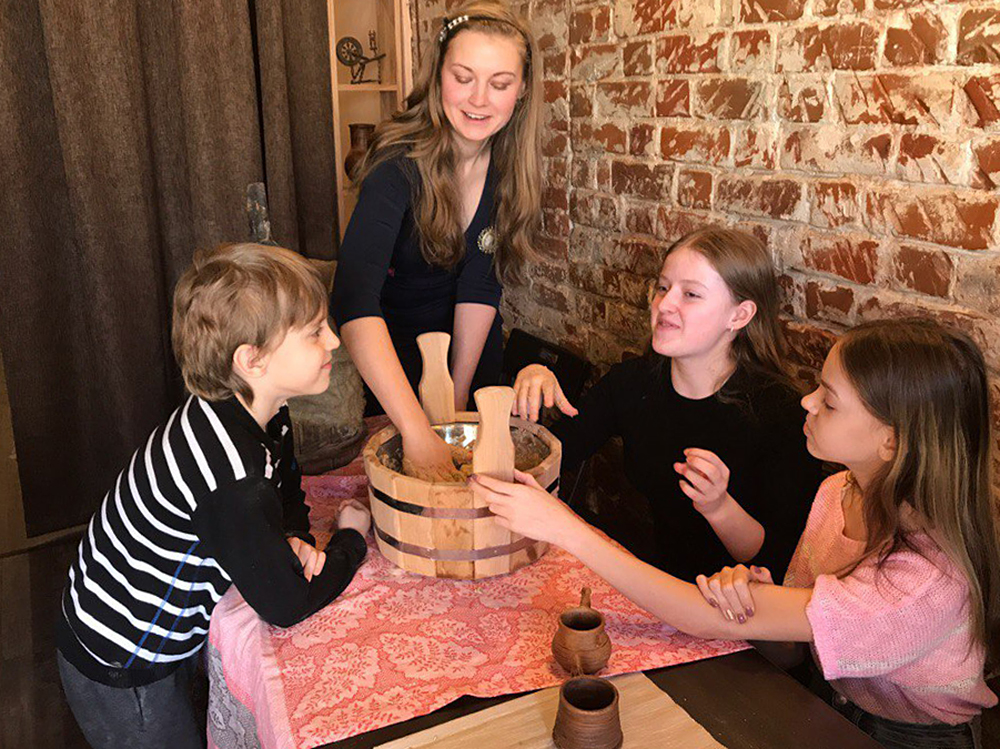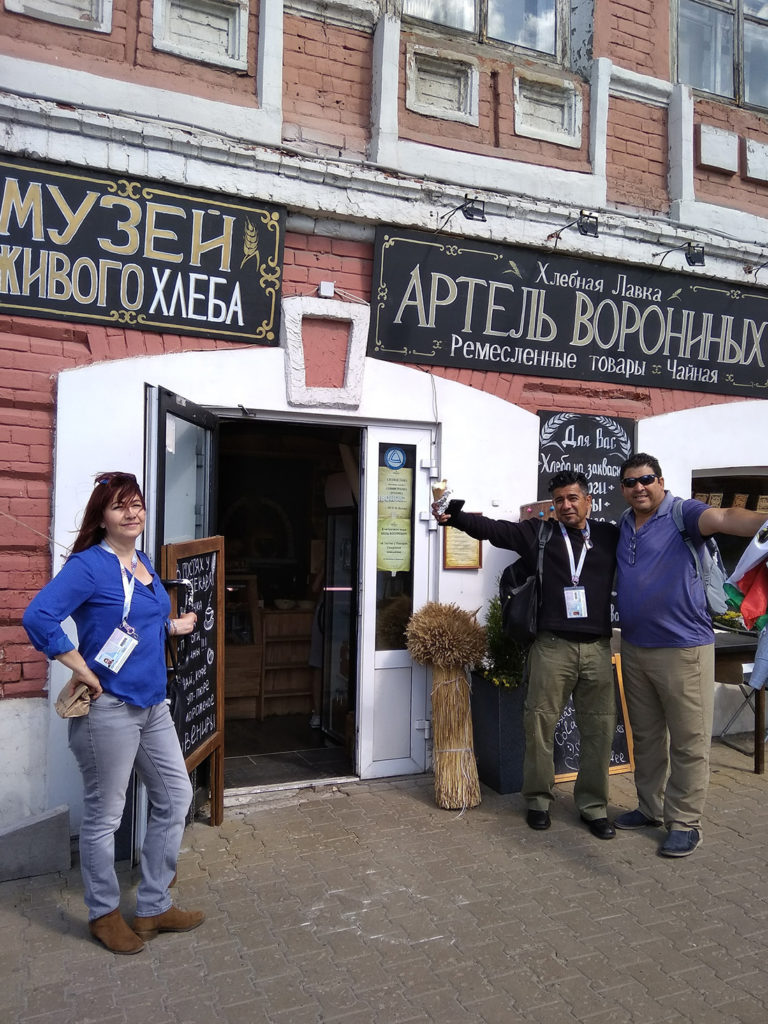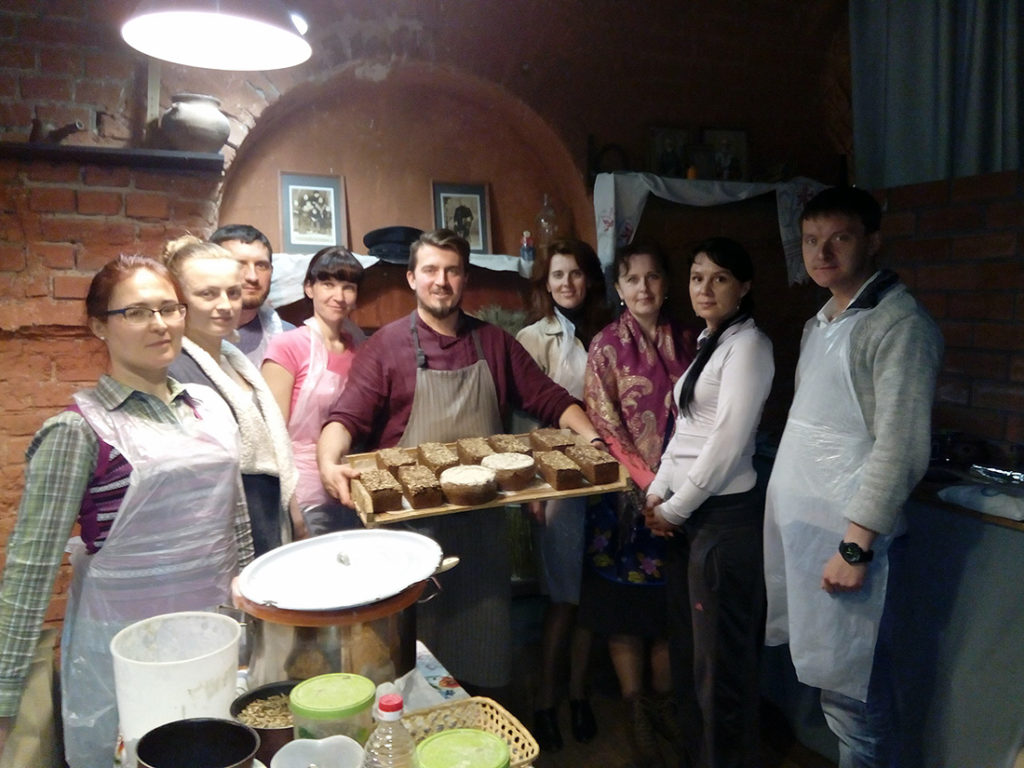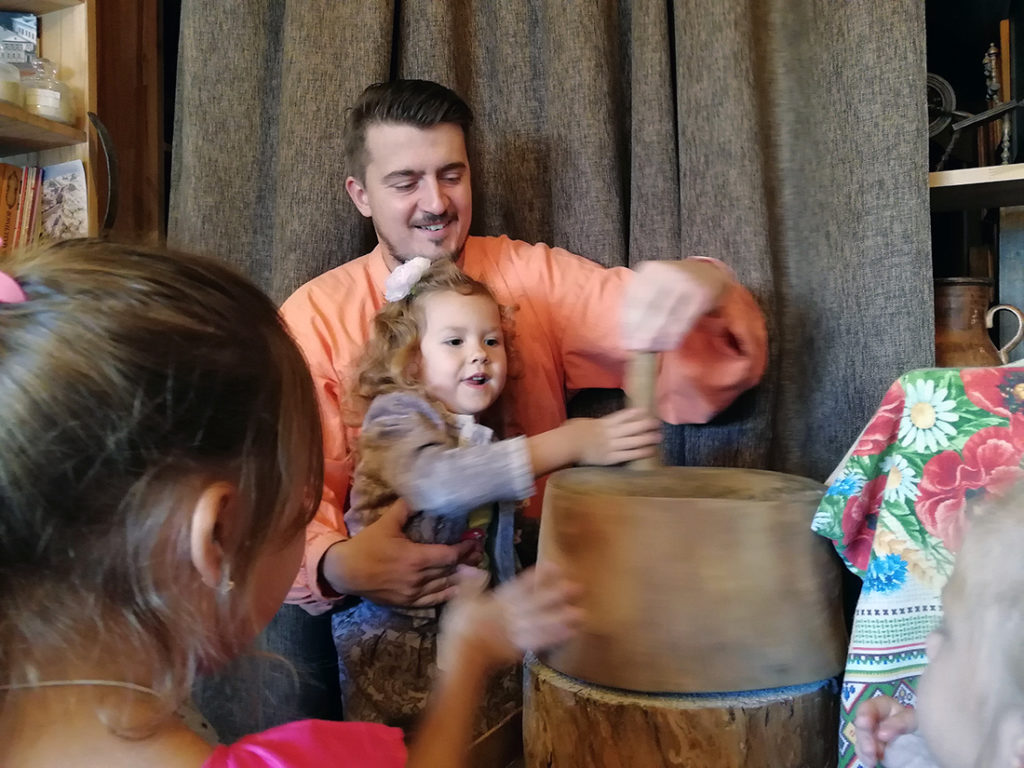Museum of Living Bread
Nizhny Novgorod region
Contact information
Operating hours
Museum programs – by appointment or according to monthly posters
Exhibition of exhibits(permanent) – in development
Ticket price
Entrance ticket – from 200 rubles
Founders of the museum
Ilya and Tatyana Voronin
Director of the museum
Tatyana Voronina
Owner of the museum
The Voronin Artel
Founded
2017
“The idea came to us, Ilya and Tatyana Voronins, and our good friend Svetlana Trushina, the ethnographer and ethno-lover, folklorist from Ryazan.
This is a bakery’s theme of traditional sourdough bread. We are inspirational leaders, founders and performers of the Voronin`s bread farm, the city’s first artisan bakery loaves on a live leaven, the founders of the shop bread and artisan goods, the organizers of the first “Living bread” intercity festival in Nizhny Novgorod in 2017, and the organizers of five “AGILE” children and family ethnography fees since 2015″. (Ilya and Tatyana Voronin)
The space of the museum is open for various events, lessons, workshops, creative meetings, and active programs for the purpose of learning and immersion in the native culture and tradition. Through the bread. Living, sweet bread. The museum has programs for families, adults, and children, as well as school and tour groups:
– the “History of One Grain” action, ethnography of bread making in Russia;
– home baker’s school of traditional sourdough bread making (there is also a professional baker’s school);
– workshops on Russian traditional and ritual baking;
– “vechory”: friendly gatherings in the folk tradition with tea, folk games, songs, and live music;
– creative thematic meetings with professionals and artisans;
– guided tours of the historical center of the city.
The museum is still young, but many people who visited the exhibition have already appreciated it. These are the inhabitants of the ancient fair city N. Novgorod with a rich bread history. These are also guests from different cities of Russia and neighboring countries. The experience of traditional bread-making and ethnographic knowledge is significant. The plans for the development of the museum are big, both in depth and in width! Join us! In the name of life on Earth!
The museum’s exhibits are also “living”. These are antique items, peasant utensils and grain inventory, and mills with stone and wooden millstones. The museum gives them a second life through these programs! The collection is constantly expanding and replenishing. The museum is looking for a room for the organization of a permanent exhibition.



